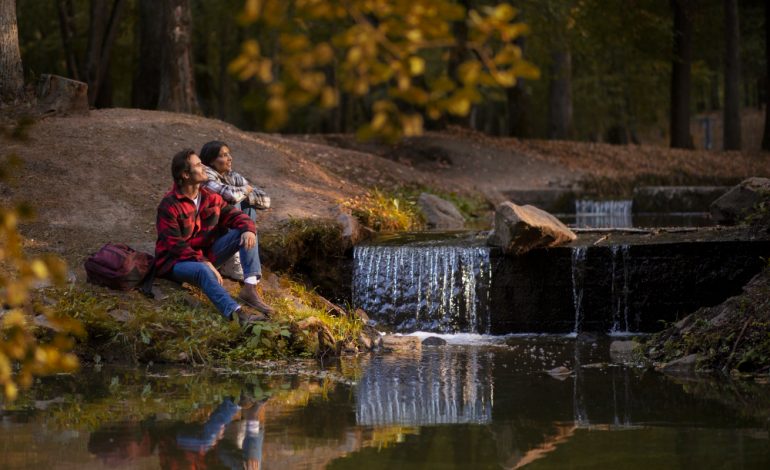
The Most Fascinating Natural Phenomena You Can Observe in Your Region
The Enchanting Dance of Light, Sky, and Season: Exploring How Atmospheric Wonders Transform Our Horizons
When we pause to look upward, the sky often reveals far more than shifting shades of blue or scattered clouds—it becomes a canvas brushed by wonders that feel both mysterious and deeply familiar. Among the most captivating spectacles are rare atmospheric events that transform ordinary days into unforgettable moments.
One such phenomenon is the sudden appearance of halos encircling the sun or moon, delicate rings of light that shimmer as though a celestial painter traced them with translucent colors. These halos are caused by ice crystals high in the upper atmosphere, each refracting and bending sunlight or moonlight. Their formation is not only visually breathtaking but also a subtle indicator of weather, often hinting at incoming changes such as approaching rain or snow. In this way, the halo is both art and message, an ancient meteorological sign whispered through refracted light.
Even more ephemeral, yet equally mesmerizing, are unusual cloud formations that punctuate the skies. Lenticular clouds, with their smooth, lens-like shape, hover like ships of vapor over mountain ridges. Mare’s tail cirrus sweep gracefully in high altitudes, while mammatus clouds bulge downward ominously, suggesting turbulence in the air. Each formation contains a scientific explanation—shaped by wind, altitude, and moisture—but also evokes the imagination and reminders that the atmosphere is never still.
The quiet beauty of twilight offers its own marvels. At dawn and dusk, when the sun sits low on the horizon, the atmosphere scatters light into gradients of crimson, amber, and violet. Occasionally, rare optical illusions such as the “green flash” appear, a fleeting emerald glow observed just as the sun dips below the horizon, caused by refraction through layers of air. Though lasting only seconds, it encapsulates the dynamic collaboration of physics and perception.
These sky-bound wonders remind us that the air above us, though seemingly empty, is alive with constant motion and invisible processes. Every shimmering halo, glowing horizon, or improbably sculpted cloud nudges us to lift our gaze and recognize the shifting theater playing just overhead.
From Forest Whispers to River Miracles: Discovering Subtle Yet Astonishing Earthbound Phenomena
Just as the skies unveil extraordinary scenes, the land around us carries its own repertoire of hidden marvels, often waiting quietly in plain sight. By slowing down and tuning our senses to the rhythms of soil, water, and life, we encounter phenomena that feel almost magical but are deeply rooted in natural processes.
A particularly striking encounter happens in places where bioluminescent creatures dwell. Fireflies flickering across summer fields or certain riverbanks create an atmosphere that feels lifted from folklore. Their glow is the product of a chemical reaction within their bodies—luciferin lighting up briefly with each pulse—yet the result transcends science into enchantment. Standing in the quiet darkness while tiny sparks drift and hover reminds us of how vividly alive our nights can be.
Equally intriguing are the “singing sands” found in certain dunes or riverbanks. When the sand is of a particular dryness, grain size, and silica composition, it can emit a humming or squeaking sound as it shifts underfoot. It feels as though the earth itself is resonating beneath us, offering a reminder that landscapes carry their own voices and expressions.
In colder months, nature reveals quieter masterpieces. Frost patterns on windows and frozen streams form intricate designs that seem like deliberate etchings. These structures, created by the expansion of water molecules under unique thermal and moisture conditions, show nature’s artistry on a crystalline scale. From feathery spirals to geometric arrays, each is a fleeting sculpture that vanishes as soon as the sun softens the air.
Seasonal cycles also carry their own theatrical moments. In spring, after a long dormancy, meadows may burst overnight into waves of blossoms, each bloom timed to maximize sunlight, pollination, and survival. The suddenness can feel like a miracle: one day, bare stems; the next, acres of color swaying rhythmically in the breeze. Beyond beauty, this flourishing reflects intricate ecological cooperation—the synchronization between soil conditions, pollinators, and climate cues.
Together, these earthbound wonders remind us that profound discoveries exist not only in remote corners of the world but also in our own backyards. From glowing insects to whispering sands, from silent ice etchings to explosive surges of flowers, each moment deepens our intimacy with the places we inhabit.
Natural phenomena—whether in the skies above or the soils beneath our feet—are constant invitations to look closer, wonder deeper, and recognize our bond with the environment we live in. Halos and unusual clouds speak of the atmosphere’s invisible forces at work; fireflies and blossoming meadows reveal the earth’s quieter but no less astonishing rhythms. Each fleeting sight, whether luminous or fragile, links us with the larger cycles of climate, weather, and life that unfold daily.
To witness these extraordinary yet accessible occurrences is to realize that the natural world’s most enchanting spectacles are not confined to distant landscapes—they are the living artistry of our very own region, waiting for eyes willing to notice.





